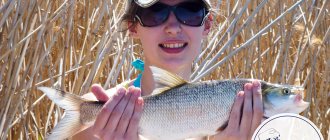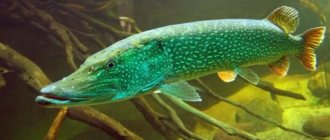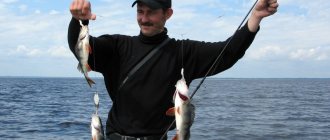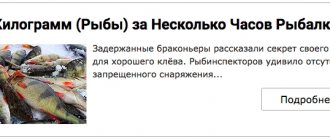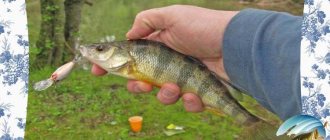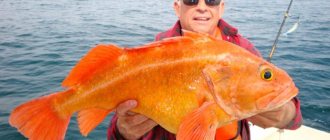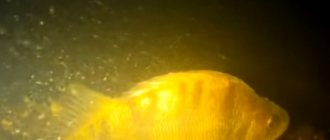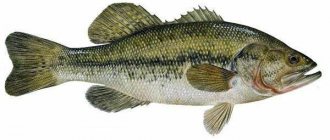Perch fish is the species of underwater inhabitants that most attracts the attention of fishermen due to its tasty, dietary meat, as well as the exciting fishing process. However, so that a lover of river hunting does not leave empty-handed, it is necessary to study information about the fish, find out the habits, descriptions, and characteristics of perches.
| Class | Ray-finned fish |
| Squad | Perciformes |
| Family | Perch |
| Genus | Freshwater groupers |
| View | More than 200 |
| Security status | Least Concern |
| The average size | 15-20 cm |
| Lifespan | 4-8 years |
| What does it eat? | Small fish |
| Optimal feeding time | Morning, afternoon, twilight |
| Enemies | Pike perch, catfish, pike, burbot |
| What do they bite on? | Maggot |
Appearance
Thanks to its spectacular appearance and pronounced striped color, perch is difficult to confuse with other species of fish. The perch has a laterally compressed body covered with dense small scales. The height of the perch's body is one third of its length, so the perch looks like a massive fish.
The back of the perch is dark, greenish in color. The sides of the perch are greenish-yellow with dark transverse stripes. The number of dark stripes can be from 5 to 9 pieces. The color of the transverse stripes in young perches is lighter, and in older ones it is darker. The belly of the perch is light, with a white-yellow tint. Large perches have a well-defined hump on their back.
Perch has two dorsal fins located close to each other. The first dorsal fin is higher and longer than the second, has a gray-green color, and has a black spot on it, which is a distinctive feature of the species. The first dorsal fin consists of 12-16 bony processes, all of which are hard and sharp. The second dorsal fin is yellow-green in color, it consists of 12-17 processes, of which only 1-2 are hard, the rest are soft.
The pectoral fins of perch are yellow, sometimes even red. The anal fins are orange or red-yellow, consisting of 8-10 processes, 1-2 of which are sharp. The caudal fin is dark at the base and red on the sides and at the tip.

The color of a perch very much depends on its habitat, water transparency, and bottom color. Perches that live in reservoirs with clear water and a sandy bottom have a lighter body color than those that live in dark peat lakes with a muddy, muddy bottom. The color of the perch also becomes more contrasting during spawning.
The perch has a medium-sized head; the mouth has bristle teeth, which are located in several rows on the palate and jaws. The bristle teeth do not give the perch's prey a chance to escape its mouth. Perch has no fangs. The gill covers of the perch have sharp spines that protect it from predators; those who have caught perch at least once know how sharp they are and what deep cuts they leave on the skin. Perch have large eyes, the iris of the eye is yellow.
Externally, male perch are practically indistinguishable from females, with the exception of the pre-spawning period, when the abdomen of the females is filled with eggs.
Description
In 1758, Carl Linnaeus classified the river perch as Perca fluviatilis. To date (at the beginning of the 21st century), Perca fluviatilis is considered one of the few fish species with well-studied taxonomy, morphology, stages of early development and growth, and ecology.
In its appearance and body color, perch is easily distinguished from all our other fish. Its body is quite wide, especially in large perches, and somewhat humpbacked; the back is dark green, the sides are greenish-yellow, the belly is yellowish; 5-9 transverse dark stripes stretch across the entire body, which make it very colorful; in some cases, these stripes are replaced by dark, irregular spots.
In addition, the caudal fin, especially in its lower part, the anus and ventral fins are bright red; The pectoral fins are yellow, the first dorsal fin is gray, with a large black spot at the end, the second is greenish-yellow. The eyes are orange. However, the color of the perch depends, like most fish, on the quality of the water, and even more on the color of the soil. Therefore, perches in clear water with a light sandy or clay bottom are very light, sometimes even without a black eye on the dorsal feather and with inconspicuous transverse stripes. On the contrary, in forest lakes with a black muddy bottom they have darker stripes, a darker back and a bright yellow belly. In some areas (as, for example, in Lake Senezhskoe, Moscow province) perches even have golden gill covers. In addition, it should be noted that young perches up to two years of age are more uniform in color than those that have reached sexual maturity and that the largest ones are comparatively darker. On the gill covers there is one sharp spine, which pricks very painfully and can even cause swelling and mild inflammation. The mouth is very large, armed with numerous but very small teeth.
With age, the perch darkens, but there are always several stripes running across its body. It’s not for nothing that he is often referred to as the “striped robber.” Perch reaches sizes up to half a meter and weight up to 2 kg. True, there are isolated cases of larger sizes.
Two forms of perch
Experienced fishermen and ichthyologists know that in large reservoirs with a rich food supply, perch forms two varieties that differ in habitat, diet and growth rate. The first variety is usually called "small", "grass" or "coastal" perch, the second - "large" or "deep" perch.
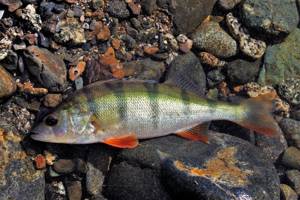
The small form of perch lives in the coastal zone of the reservoir, feeds mainly on invertebrates and grows very slowly, reaching a weight of no more than 30 grams by the third year of life, and the maximum weight of such a perch is no more than 70 grams. However, despite its small size, such a perch is sexually mature and capable of reproduction.
Deep perch lives in deeper parts of the reservoir, grows much faster than small perch and feeds on small fish, leading a predatory lifestyle. Deep perch has a darker color, by the third year of life it reaches a weight of 80-100 grams, and in subsequent years it gains weight by 50-80 grams annually.
Dimensions, life expectancy
The maximum size of perch in each body of water varies significantly. There have been cases of significant differences in the maximum sizes of perches living even in neighboring ponds. In Russia, the largest perches live in the deltas of the Volga and Kuban and reservoirs of Siberia.
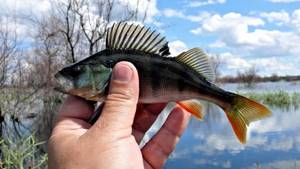
The average size of an adult perch is 15-20 cm. As a rule, the length of a perch does not exceed 50 cm and its weight is 2 kg.
The lifespan of perches, as well as their size, depends on the specific body of water. The likelihood of catching large trophy perch is much higher in large bodies of water.
The largest perch was caught in 1945 in Chiddingstone Castle Lake (Great Britain), its weight was 5.91 kg.
The maximum recorded lifespan of perch is 23 years. A perch of this age was caught in Mongolia in Lake Khuvsgul, its length was 44.7 cm and its weight was more than 2 kg.
Age and size
The usual size of a perch does not exceed 800-1200 g. In very rare cases it reaches 2-2.5 kg and only in large lakes, for example Onega, are there 3.2-kilogram perches, and in Chudskoye even 4-kilogram perches. But in the rivers and lakes of Western Siberia, such giants are no longer a very big curiosity, and in the lakes of the Yekaterinburg district, huge perches weighing 4-4.8 kg are currently found. However, large perches are not at all as large as one would expect, which depends on the fact that they grow in thickness and height rather than in length. They are almost never more than 54 cm, but their thickness in the back sometimes extends up to 18 cm, and their height up to 27 cm.
There are two races of perch that occur together: small is a slow-growing perch, often known as “grass” perch, which in the third year of life reaches a weight of 20-30 g, but already has the ability to spawn. Its maximum weight rarely reaches 60 g. It is distinguished by a darker color and leads a gregarious lifestyle; large, fast-growing “deep” perch at the age of four weighs 80-100 g and lives in the open part of reservoirs. Further increase in its weight on average ranges from 50 to 80 g per year, depending on nutritional conditions and environment.
Relatives of perch
Perch belongs to the genus of freshwater perches of the perch family. In addition to river perch, the genus of freshwater perch includes yellow perch (Perca flavescens), which lives in water bodies of North America, and Balkhash perch (Perca schrenkii).
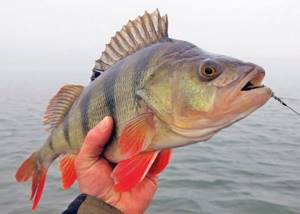
Among other freshwater fish, the closest relatives of perch are pike perch and ruff. All these fish: perches, ruffes and pike perch had a common ancestor that existed on our planet 25 million years ago.
Types of perches
The perch family consists of more than 100 species. On the territories of countries that were formerly part of the USSR, several species are represented:
- river perch - most often found in all fresh water bodies;
- yellow perch - these fish have fins, tails and yellow scales;
- Balkhash perch has a dorsal fin without dark spots, and adult representatives do not have vertical stripes;
- sea bass - all fin needles have poisonous glands.
Spreading
The natural habitat of the perch covered almost all of Europe, with the exception of the northern part of Great Britain, the Atlantic coast of Scandinavia, Ireland, Spain, Italy, the southern part of the Balkans, Crimea, the north of the Kola Peninsula and the Arkhangelsk region of Russia. The habitat of the perch included the northern part of Asia to the Kolyma basin to the east and to the Aral Sea basin to the south. Perch is found in Turkey, Afghanistan, Mongolia, Azerbaijan and Turkmenistan.
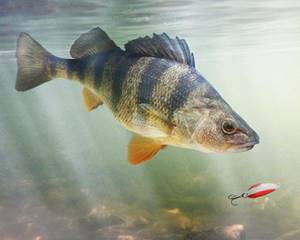
In the 19th and 20th centuries, the range of river perch expanded significantly due to its introduction into other water bodies. Perch appeared in the following reservoirs: Spain, Cyprus, Morocco, South Africa, China, Australia and New Zealand. Most cases of perch resettlement are associated with the British, who brought it to their colonies for the purpose of recreational fishing. Currently, perch lives in water bodies of 51 countries around the world.
You may be interested in: Echo sounder
Habitat
Perch lives in lowland reservoirs: rivers, lakes, ponds and reservoirs, but is also found in high-mountain lakes, at altitudes up to 1000 meters above sea level.
Perch can live in brackish water and is found in coastal areas of the Baltic, White and Caspian seas.
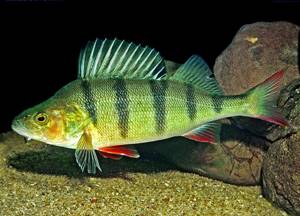
Perch is a widespread fish and is found in most bodies of water in its range. In some reservoirs, perch may be the only fish living in it.
In reservoirs, perch adheres to the coastal zone of the reservoir, overgrown with aquatic vegetation, as well as areas of reservoirs with artificial and natural shelters.
The perch spends most of its life near the bottom. In large bodies of water, at great depths, schools of small perch are located on the slopes of the depths, that is, places where there is a sharp increase in depth. Schools of perch go to shallow waters to hunt for fry, which stay in large numbers in such places.

Perch does not like cold water and fast currents; you will not find it in the upper reaches of rivers with cold spring water. In most reservoirs, perch sticks to areas where the water temperature is from 13 to 19 degrees.
A perch boil occurs when a school of perch surrounds a fry, forcing the fry to rise to the very surface or even jump out of the water in an attempt to escape from greedy predators. The water in such places is said to boil. A large number of fry jumping out of the water attracts seagulls and other fish-eating fish. It is by flocks of birds circling in one place that fishermen find perch pots.
Perch lifestyle
In the warm season, perches stay in creeks and bays overgrown with aquatic vegetation, while medium-sized perches keep in schools of up to 10 fish, and small-sized perches can have a school size of up to 100 fish.
Perch likes to be near the piles of destroyed bridges, near large stones and snags. Their greenish coloration allows them to ambush small fish among aquatic plants. Large perches live in deeper places: pools and holes, often snags, going out to hunt in the morning and evening.
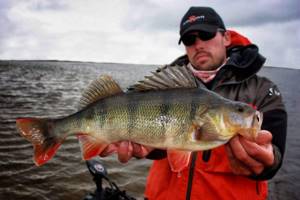
Small perches hunt in schools, large perches hunt alone. When chasing a fry, the perch actively pursues its prey, jumping to the surface of the water, sometimes even onto the shore or aground. When hunting, the perch spreads its dorsal fin. Large perches hunt from ambush like zander or pike.
Perch leads a twilight-day lifestyle; it hunts during daylight hours with peaks of activity at the border of day and night, that is, in the morning and evening twilight. At night, perch activity decreases sharply.
The main factors determining the activity of perch:
- Water temperature
- Length of daylight
- Structure and composition of the diet
- Oxygen content in water
In the fall, perches gather in large schools and stay in deeper and more open places. In the cold season, perches stay in the bottom layer of the reservoir. The larger the perch, the deeper places it prefers to stay. In winter, perch, just like in summer, is active during the daytime, with increased activity at dusk and is not active at night.

The behavior of perch living in a river and in standing water is different. In the river, perch constantly experiences competition from pike and pike perch, which can drive it away from a good place. The perch living in the river is constantly on the move in search of food, so the bite here can be more active, and the perch can reach trophy size. In rivers, perch occupy whirlpools, places with reverse flows, shady places in rivers and shallow waters overgrown with aquatic vegetation. In rivers it often leads a solitary lifestyle or gathers in small flocks of up to 10 tails, this is due to high competition for food.
In still water, perches feel much more confident. In ponds and reservoirs, perches gather in large schools, which helps them organize collective hunts for fry. In still water, perch is most active in the morning and evening twilight.
Behavior of river perch depending on the time of year
At different times of the year, river perch behaves differently. Here there is a dependence on the movement of schools of small fish through the reservoir, which is the basis of the food supply. The location of the striped predator will directly depend on their location.
Spring period
In the spring, having barely recovered from spawning, the perch continues to stay in shallow bays, where it spawns. The reason for this is that schools of white fish heading for spawn will enter the same shallow bays. For the striped predator, this is golden time, which he devotes to improving his condition after spawning. As a rule, spawning of a large number of fish species takes place until May. Then the perch gathers in schools and leaves the shallow, warm areas.
Summer period
Having finished spawning, the perch heads to areas with slow currents and plenty of places to set up ambushes for their future victims. “Grass” perches take their positions in quiet backwaters, thickets of reeds, water lilies, and other coastal vegetation. The most promising areas for setting up ambushes will be areas of the bottom topography adjacent to the riffles and snags. In the summer heat, perch will take refuge in shady areas, such as:
- bridge supports
- overhanging cliffs
- leaning reeds
- bridge spans
- boat berths
Large specimens of deep perch are found in more inaccessible places. These include snags and deep holes with uneven bottom topography. Deep perch emerge from their hiding places to feed at dawn and at nightfall.
In large bodies of water, perch can be found on prominent elevations of the bottom, accumulations of large stones, thickets of water lilies and reeds, at depth differences along the shoreline, and islands.
The perch has perfectly acclimatized to life in large reservoirs and small reservoirs that appeared on the sites of abandoned quarries. Perch does not live only in very swampy areas, where the water freezes to the very bottom.
Autumn period
At the beginning of autumn, white fish begin to flock into schools and move from the coastline into the depths of the reservoir. Following the departing food base, the perch also moves. With a decrease in air temperature, all the fish will go deeper, because the deep layers will be the warmest. The perch, having moved into these layers, will remain there in the future. According to the first ice, it will not yet stand in one place. Its schools will move freely throughout the water area of the reservoir, following schools of fish. Signs of its activity can be observed near the edge of the reeds and in shallow water.
Winter period
With the onset of the wilderness , at shallow depths, the process of decomposition of dying plants occurs, lowering the oxygen content in the water. Under such conditions, all fish only occasionally leave their places of stay at depth. All vital processes slow down, and the abundance of food in wintering areas does not oblige the perch to take active action. There is only one serious danger - becoming a victim of another, more serious predator. Only with the arrival of warmth does the perch switch to normal feeding and swimming in the water area of the reservoir. Schools of perch approach the mouths of melted streams and rivers, which carry vital oxygen in their waters. After the melt water, containing a large amount of it, spreads throughout the reservoir, the perch will begin to move from its wintering grounds in search of a future spawning area.
Reproduction
Spawning of perch occurs immediately after ice drift, at a water temperature of 7-8 °C. In the southern regions of the country this occurs in February-April, in more northern regions in May-June. Perch spawning usually occurs immediately after pike spawning. Large perches begin spawning later than small ones.
Males are ready to begin spawning at the age of 2-3 years, females a little later, at the age of 4-5 years. There are no changes in appearance during spawning in perch. Spawning usually lasts 4-5 days. The fertility of a female perch is from 12 to 300 thousand eggs, depending on its size. The female is accompanied by several males during spawning.

During spawning, the female lays mesh ribbons of gelatinous substance, on each edge of which there are 2-3 eggs, on last year’s vegetation, flooded bushes and snags, or even just on the bottom, and the males fertilize them. The diameter of the perch egg is about 4 mm, the length of the ribbon can be from 12 cm for small perches, up to 1 meter long for large ones.
About two weeks after the eggs are laid, perch larvae hatch from them, which are about 6 mm long. After hatching, perch larvae feed on phytoplankton, rotifers and crustacean larvae; after some time, copepods and daphnids are added to them. Soon the perch larvae move to a deeper zone of the reservoir, where they feed on zooplankton and stay in the upper layers of the water. After three to four weeks, the grown perch larvae return to the coastal zone.
With a body length of 15-20 mm, the perch larva becomes a fry, and with a body length of 20-25 mm, dark perch stripes become noticeable on the fry.
Spawning of the Ural perch
Male stripers can reproduce in their second or third year of life, while females mature in their third or fourth year.
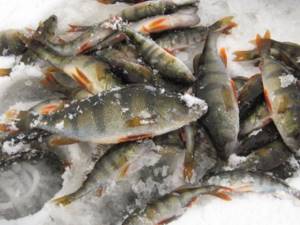
Spawning begins when the water warms up. The optimal temperature ranges from 7 degrees to 15. This period falls at the end of April and beginning of May.

Spawning occurs annually. During this period, fish can immigrate a short distance. For example: perches swim from the right bank to the left.
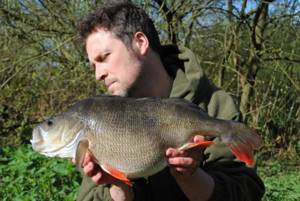
The food for the fry is plankton, and as soon as they grow up, they begin to eat other invertebrate inhabitants, including small fish and even fellow fish.
- Loach - fish lifestyle, nutrition, reproduction process + 71 photos
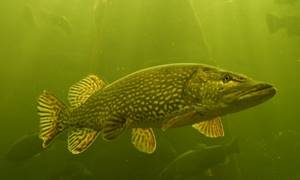
Pike - appearance, habitats, nutrition, varieties, spawning + 86 photos
- Silver carp - fish characteristics, habitats, fishing and bait features + 80 photos
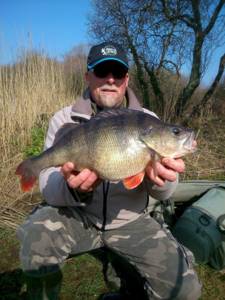
What does perch eat?
In the first year of life, perch feeds on zooplankton and benthic organisms. As soon as the perch reaches 4 cm in length, which usually happens in the second year of life, and sometimes in the first, it begins to feed on fry.
You may be interested in: Minnow: characteristics, size, color, wiring, tips, photos, videos
Fish become the main food of perch only when it reaches a length of 15 cm, but even large perches continue to feed not only on fish, but also on zooplankton, benthos and other animal food.

As the age of the perch increases, it begins to hunt for increasingly larger and faster objects. Perch at the age of 3 years feeds on fish ranging in size from 2 to 4 cm, and at the age of 6 years on fish ranging in size from 2 to 8 cm.
Perch eats not only fish, but also other animal foods. The diet of perch depends on the reservoir in which it lives, and can also change depending on the time of year and the availability of food organisms. Perch easily switches from one food to another.
Perch prefers to feed on narrow-bodied fish species: roach, minnows, stickleback, and sprat. To a lesser extent, perches eat: bleak, ruffs, gobies, fry of pike perch, crucian carp and silver bream. In addition to fish, perches feed on insect larvae, frogs, and crayfish.
Perch is prone to cannibalism, with larger perches eating their smaller counterparts. This most often happens either in late autumn, when juvenile perch move to deeper places, or in reservoirs inhabited only by perches. Cannibalism is a protective mechanism that limits the uncontrolled reproduction of perch.
In the spring, when the snow melts, perches feed on worms and invertebrates that enter the reservoir along with the melt water. In summer, perches feed on a wide variety of animal food, a large proportion of which is whitebait. Perches feed especially actively in the fall, which is associated with preparation for winter. It is in the fall that perches increase the most in size and weight.
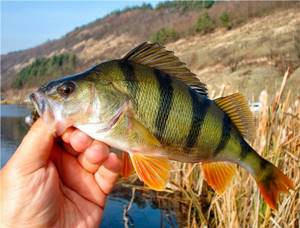
By the end of December, the activity of perch decreases greatly, and it lies at the bottom of the reservoir until the end of February. The activity of perch is restored with the approach of spring and an increase in water temperature; the perch begins to intensively feed on bloodworms, amphipods and jigs, preparing for spawning.
The perch is so voracious and greedy that it fills its belly so much that the tails of fish it catches that do not fit in the stomach can stick out of its throat. For ten months of the year, perch swallows everything that moves and resembles food. It is for this quality that amateur fishermen love it.
Perch diet

Perch is such a voracious predator that it eats everything that moves, both in the water column and at the bottom of the reservoir. The most important thing is that perch can easily destroy eggs laid by other fish. When perch fry are born, they stay close to the bottom, where they feed on small living organisms. By mid-summer they move to the coastal zone, where they hunt for fry of roach and other small fish.
Perch prefers non-valuable fish species such as smelt and minnow. In second place for perch are ruffs, gobies, bleak, juvenile silver bream, as well as small pike perch and crucian carp. Often, perch hunt for mosquito larvae, crayfish and frogs. Sometimes you can find stones and algae in the stomach of this predator. Scientists believe that perch swallows them to normalize digestion processes.
With the arrival of autumn, when perch and other fish species begin to eat, perches easily eat their relatives. This fact leads to a decrease in the predator population, but at the same time, peaceful fish have a chance to survive.
Perch description, lifestyle
Perch growth rate
The growth rate of perches living in different bodies of water varies greatly. The growth rate of perch depends on the climatic conditions of the reservoir and the availability of food. On the territory of European Russia, perch grow fastest in the Volga delta, and slowest in the reservoirs of Karelia and the Kola Peninsula. Perches grow quickly in the lower reaches of the Dnieper.

In general, the growth rate of perch is not very high. In small reservoirs and reservoirs with a poor food supply, by the first year the perch grows to a length of 5 cm, and by 6 years up to 20 cm. In large reservoirs and reservoirs with a rich food supply, by the first year the perch can grow to 12 cm in length, and five - a six-year-old perch can be 35 cm long.
In order for a perch to grow to weigh 1 kg, it needs to eat 4.9 kg of other fish. Puberty occurs in male perch at the age of 2-3 years, in females a little later, at the age of 4-5 years.
If large predators are caught in a reservoir as a result of excessive fishing pressure, the number of perch increases sharply, food competition increases, as a result of which the perch becomes smaller and becomes a trash fish.
Enemies of perch in nature
Despite the presence of thorns and thorns, perch often becomes a victim of various predators. The enemies of perch in nature are other predatory fish: pike, pike perch, bersh, catfish, burbot, salmon. The greatest damage to the perch population is caused by pike and pike perch. In many reservoirs, perch is the main food for these predatory fish.
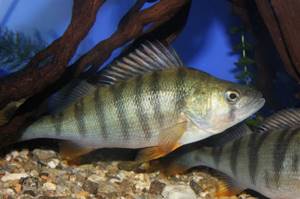
The enemies of perch are also birds that feed on fish: gulls, loons, terns, osprey.
Diseases and parasites of perch
Perch can suffer from more than two dozen diseases, most of which are caused by infection with various parasites, both protozoa and metazoans.
Protozoan parasites can affect perch's skin, gills, circulatory system, intestines, liver, kidneys, gall and bladder.
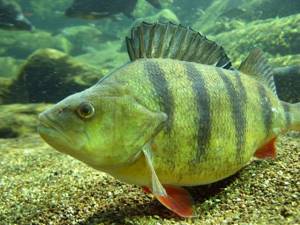
Multicellular parasites affect the body surface, fins, muscles, gills, eyes, heart, oral cavity, esophagus, stomach, intestines, liver, kidneys, bladder, swim bladder.
Two diseases of perch pose a danger to humans: diphyllobothriasis and apophallosis.
Diphyllobothriasis is caused by a tapeworm called broad tapeworm. A person becomes infected by eating raw, lightly fried, lightly dried or lightly salted or poorly smoked fish. After infection, symptoms of the disease may not appear for up to 2 months. Then there is abdominal pain, loss of appetite, nausea, and vomiting. Anemia subsequently develops.
Prevention of this disease is to eat only properly heat-treated or thoroughly salted fish.
Apophallosis (or Rossicotrema) is caused by the trematode Rossicotrema donica. Humans and animals become infected by eating contagious fish. The fluke lives in the small intestine.
Prevention of the disease is proper thermal cooking.
Perch fishing
Perch is one of the most popular objects of recreational fishing. In some reservoirs, the perch catch of amateur fishermen exceeds the size of commercial fishing.
Perch is an interesting object of fishing, since it is less afraid of noise than other fish, it is distinguished by greed and courage; when caught, it puts up stubborn resistance, although it quickly gets tired.
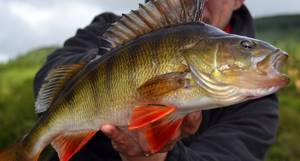
Perch can be caught using both natural and artificial baits. Perch is caught using: a float rod, spinning rod, this rod, track, trolling, fly fishing, circles and vertical lures. The most popular among anglers of all methods of catching perch are the float rod and spinning rod.
For float fishing for perch, a rod with a length of 4 to 7 meters, a fishing line with a diameter of 0.08 mm and a hook No. 16-18 is most often used. The following baits are used: worms, bloodworms, caddis larvae and maggots. Sometimes when catching perch, to lure it into the fishing zone, they use bait, which is bloodworms. Perch is also caught using live bait, which is used as bleak or verkhovka.
You may be interested in: Chub
In recent years, fishing for perch using a spinning rod has become increasingly popular. For catching perch, a rod 2.4 meters long, medium-fast action, with a weight of up to 12 grams is used.
Depending on the fishing conditions, either regular monofilament or braided fishing line can be used to catch perch. All types of spinning baits are used to catch perch: rotating and oscillating spoons, various wobblers, a wide variety of silicone baits.
Spinner baits are very effective when catching active perch in the summer and early fall. When catching perch with spinners, the size of the spinner plays an important role; the smallest perches can be caught with spinners of sizes 00 and 0, spinner No. 1 is the most universal in size, and the largest perches can be caught with spinners of sizes No. 2 and 3. The most common retrieve for catching perch with a spinner is a slow, steady retrieve close to the bottom.
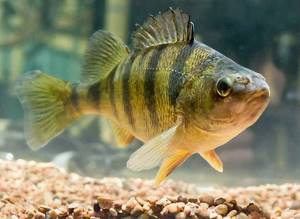
Recently, the use of a variety of wobblers has become increasingly popular for catching perch. Wobblers, like spinners, are most effective when catching active perch in summer and early autumn. The most suitable size of wobblers for catching perch is from 2.5 to 7 cm. For catching perch, both floating wobblers and sinking and suspenders can be used. The body shape of wobblers for catching perch can be very different.
The use of silicone jig baits: twisters and vibrotails brings very good results when catching perch. Their use is especially effective in the autumn, when perch fishing is carried out near the bottom at significant depths. When catching perch with silicone baits, stepped wiring is most often used. When fishing for perch, good results are achieved by using spaced-out rigs, primarily with a lead and a drop-shot. A good catch of perch can be obtained by fishing with a spinnerbait.
In those regions where a stable ice cover forms on water bodies in winter, fishing for perch from ice is very popular. In winter ice fishing, perch is the number one catch.
In winter, perch is caught in a variety of ways: with winter fishing rods with a jig, with a fishing rod with a winter lure, and with a balance beam. The best bite for perch in winter occurs in the first days after freeze-up, as well as towards the end of winter during the pre-spawning feast; anglers call these periods the first and last ice.
Processing and cooking
Perch meat, like all perch fish, has good taste. Compared to other river fish, perch has relatively few bones. Perch meat is considered a dietary product; 100 grams contain only 82 kcal. Perch meat retains its taste when frozen for 3-4 months.
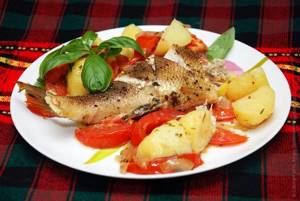
A wonderful fish soup is made from perch, canned fish and fillets are prepared, perch is fried, dried, baked and smoked.
Various perch dishes are very popular in Scandinavian countries and Eastern European countries, including Russia. In Finland, perch is used to make a national dish called kalakukko - perch pie with lard. In Karelia they prepare a national dish called naparokko - a soup made from dried perch. In Italy, perch with white wine is considered a Christmas dish.
Many housewives do not like to cook perch because of its prickly fins and spines, as well as its dense small scales, which are difficult to clean. Due to the difficulties associated with cleaning perch from scales, there are methods of preparing perch in an unpeeled form, when only the internal organs of the perch are removed before cooking. Some housewives, before cleaning the perch, immerse it in boiling water for a couple of seconds, after which the scales come off much easier. In order to avoid punctures and cuts from the fins and spines of perch when handling perch, it is advisable to use rubber gloves.
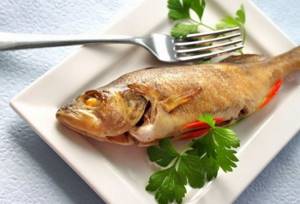
Perch is one of the best fish for making fish soup. Both large and small perches are caught on the fish. To prepare fish soup from small perches, they are gutted without removing scales, wrapped in gauze, boiled for a long time, then the perches are thrown away, and larger fish are placed in the fish soup. Large perches are boiled in the ear in a small amount of water, then the ear turns out to be richer and more fragrant. You can put various spices, fresh porcini mushrooms, and dry white wine in perch soup.
Hot smoking is one of the best ways to cook perch. To smoke perch, it is best to use oak, beech, alder, ash, apple or cherry wood chips.
There is no need to use spices when smoking perch. Smoking time for perch is at least two hours. Smoked perch should not be stored for more than three days. Sometimes perch is smoked not by hot smoking, but by the so-called semi-hot smoking. With semi-hot smoking, the smoke temperature is 50-60 degrees. This smoking temperature is achieved by removing the top lid from the smokehouse. Smoking time for semi-hot smoked perch is 12 hours.
Many fishermen prepare dried perch. Perch is not a fatty fish, so in order to prevent the fat from flowing down from the fish, the perch is hung head down, then the fat remains in the fish.
In order to avoid getting sick with diphyllobothriasis, you need to use an increased concentration of salt when salting perch.
In addition to the above methods of preparing perch, there is a huge variety of recipes for its preparation. You can make aspic from perch, make cutlets from it, bake it in foil or on a baking sheet in the oven. Try different recipes for cooking perch, experiment and you will not be disappointed.
Life cycle of a perch
In spring, perch's food intake can range from late March to early April. Guided by this, we are accustomed to calling two periods – pre-spawning zhor and post-spawning. In the first case, the zhor begins long before the ice melts. Perch eats up before spawning. Usually, by the beginning of spawning, the reservoir is deprived of ice. Usually fishing during this period occurs with winter gear. The second zhora usually begins at the end of May. During this period, spawning of small fish just ends. And the recovery period for fish is very fast.
In summer, perch's appetite weakens significantly. Now there is no need for food compared to pre-spawning periods. In summer, perch has no zhor, just like pike does.
In autumn, when winter approaches, the fish's appetite increases. The activity of the fish increases, this is justified by the fact that the fish needs to gain fat during a difficult period. Perch begins its autumn feeding at the end of September, when the water temperature drops below 10 degrees.
At the end of autumn, ice begins to form on reservoirs. In winter, fishing usually begins in early November. The winter fat of perch directly depends on the tranquility of the reservoir, because only when the waves stop flowing, ice fills the entire surface of the lake, the fish begins to walk in shallow water, and comes to a distance accessible to the fisherman. As it gets colder, the fish sink to depth, which means only one thing – the winter glutton of perch is coming to its logical conclusion.
